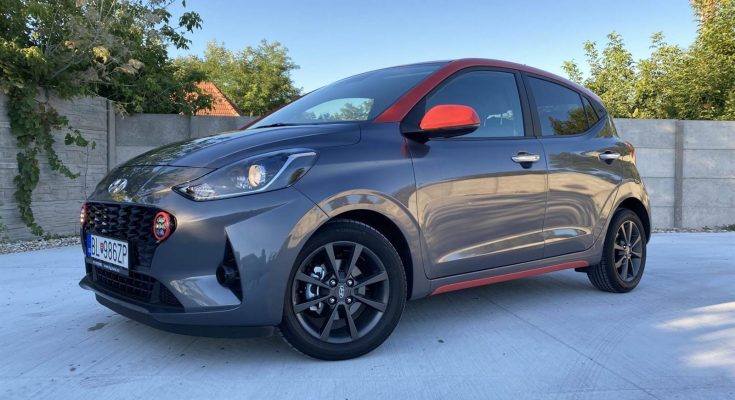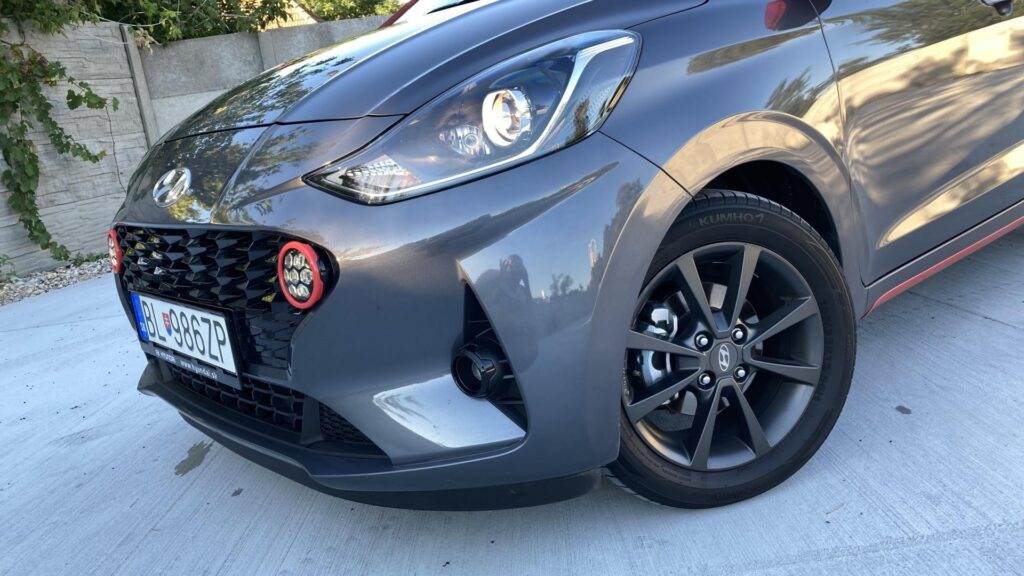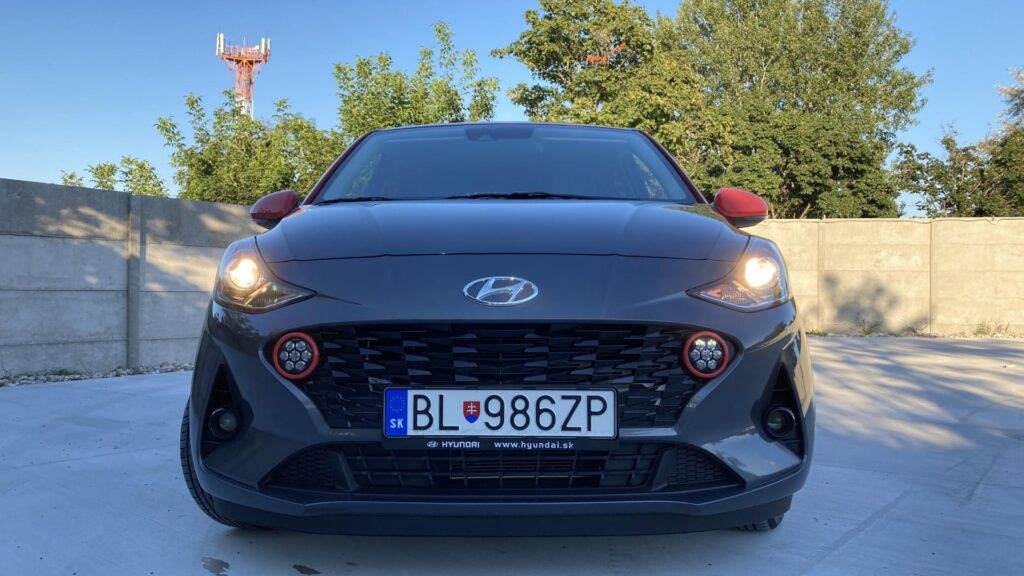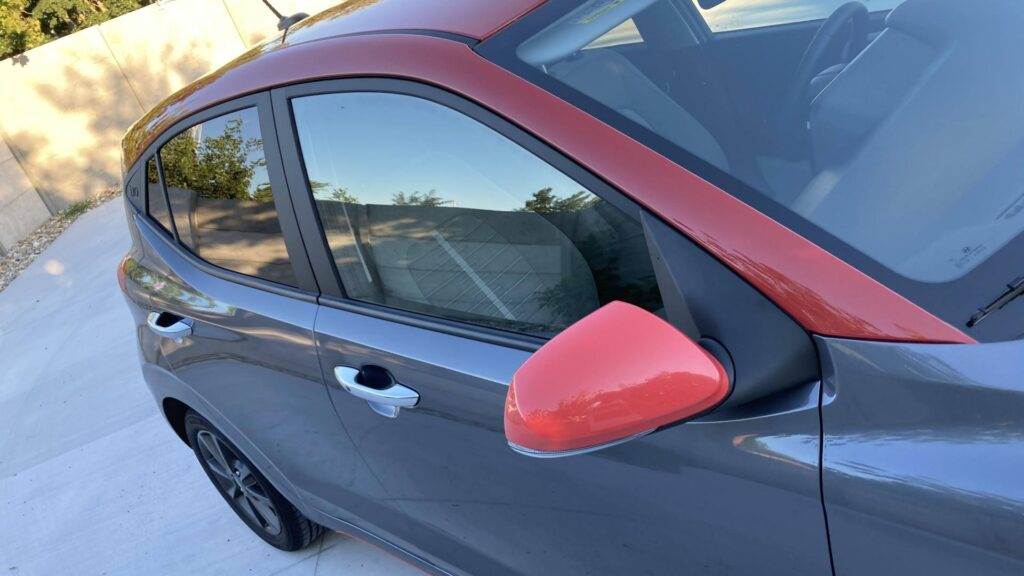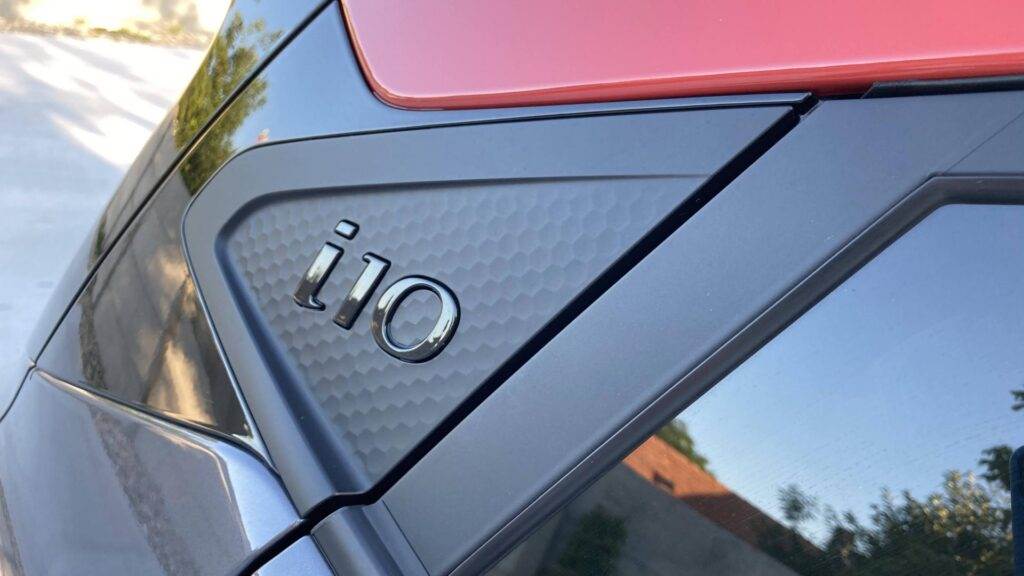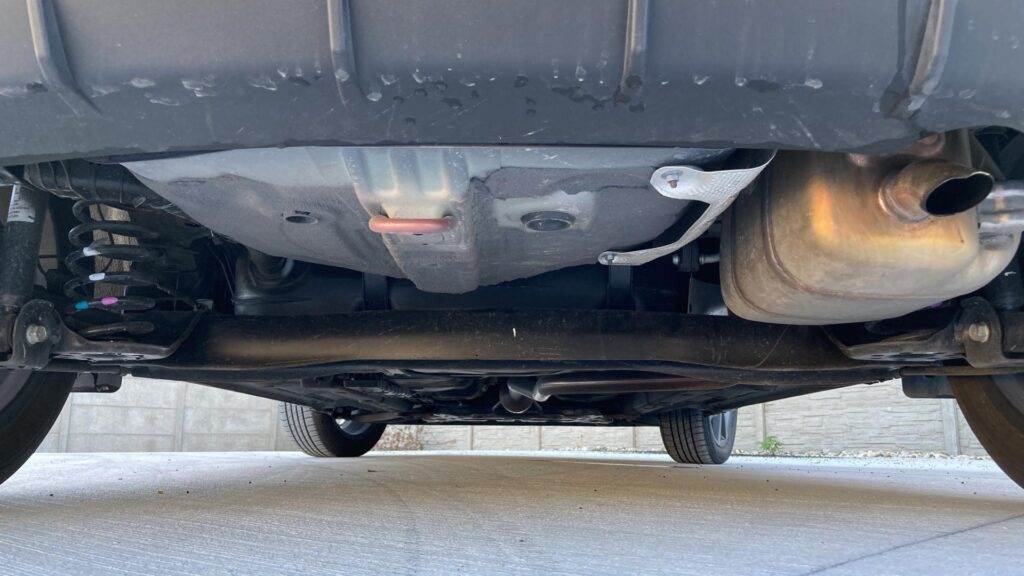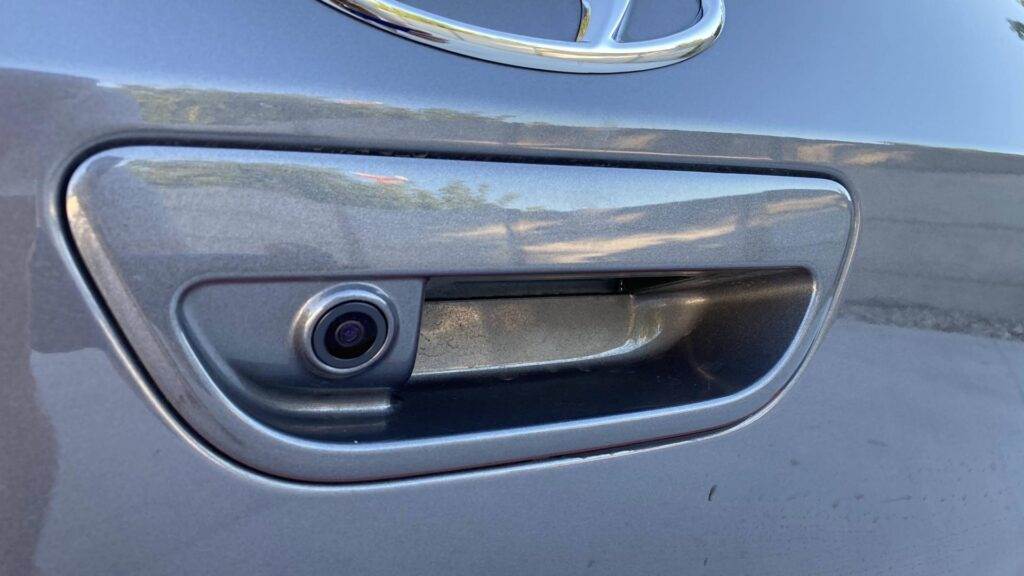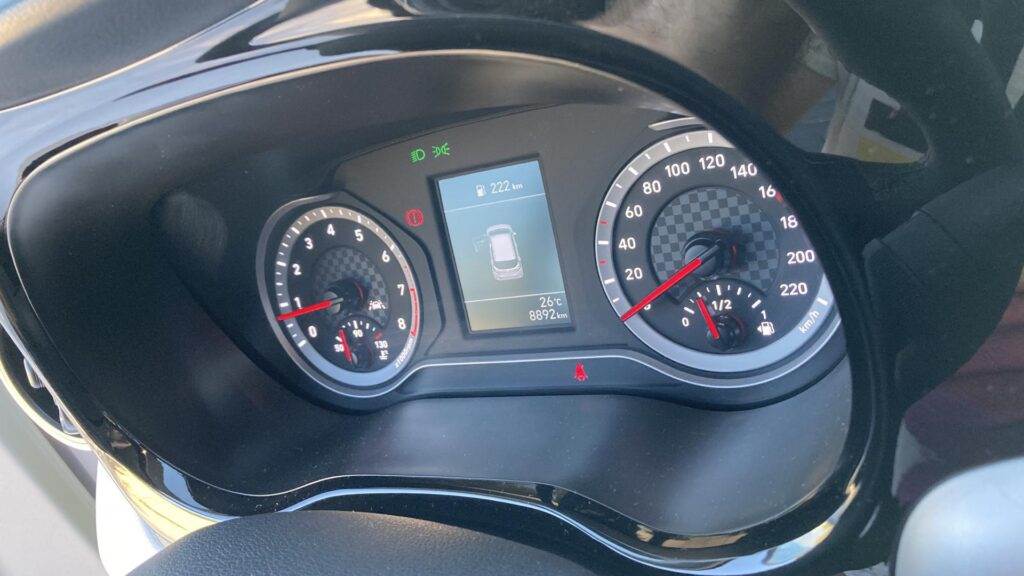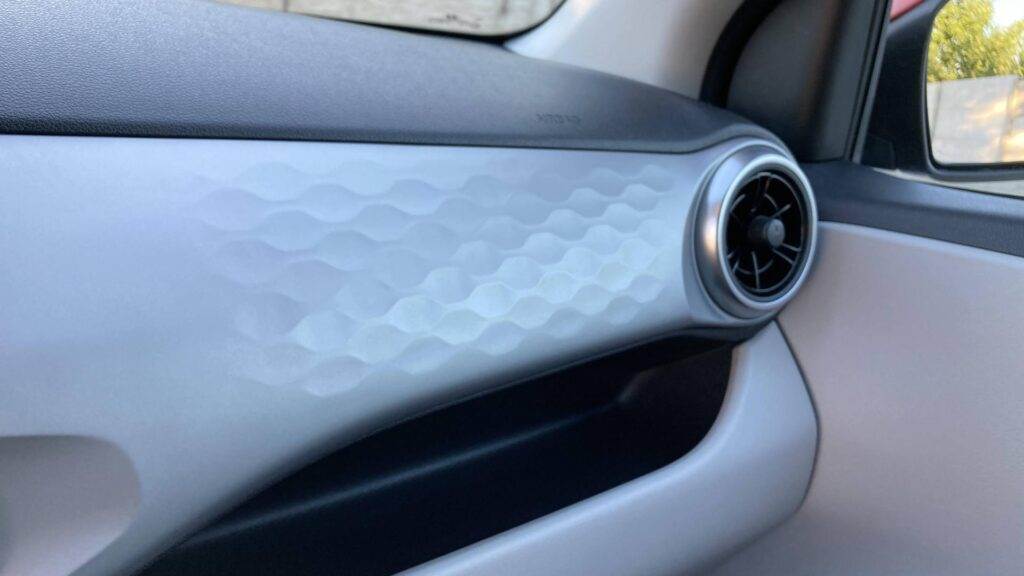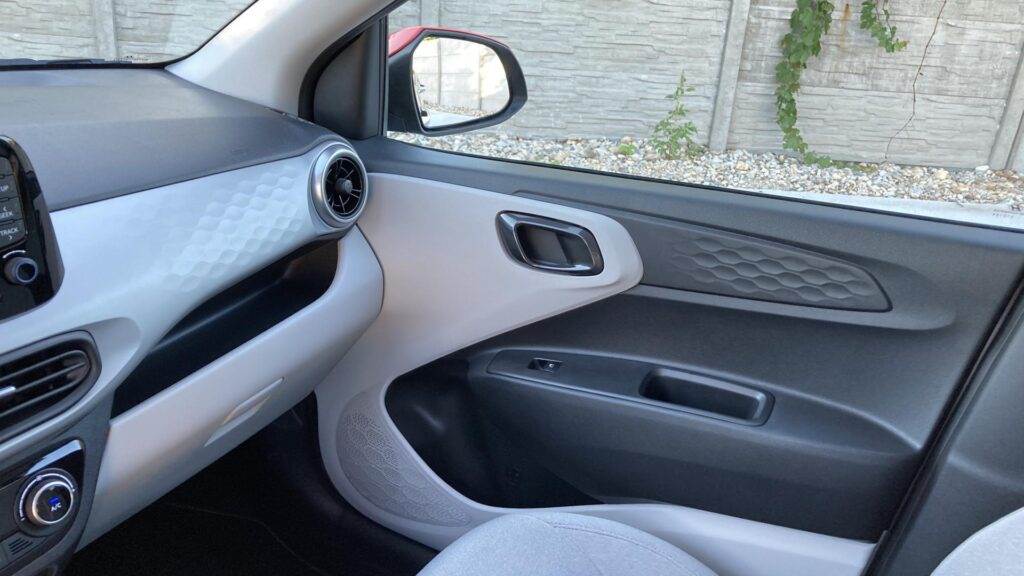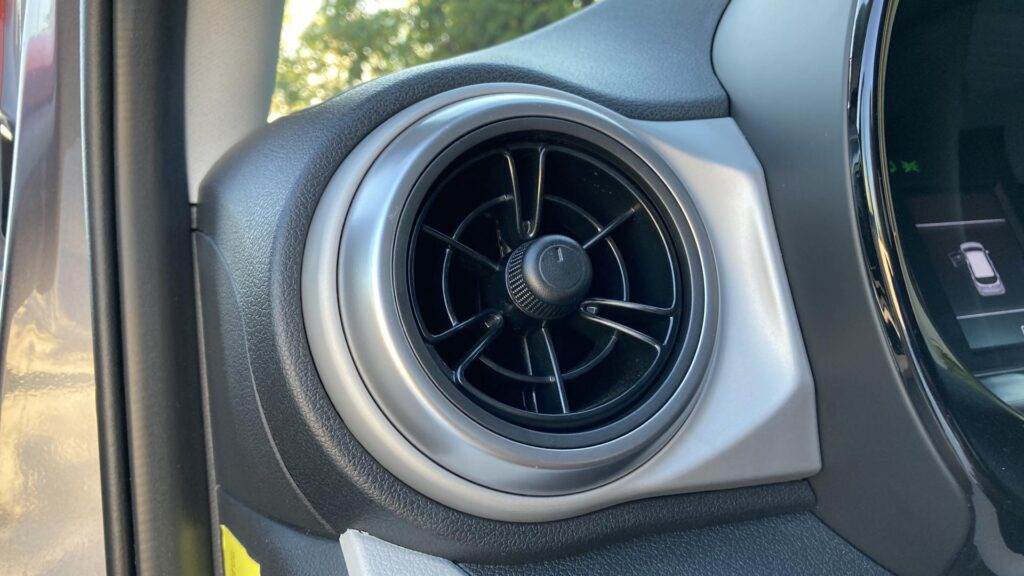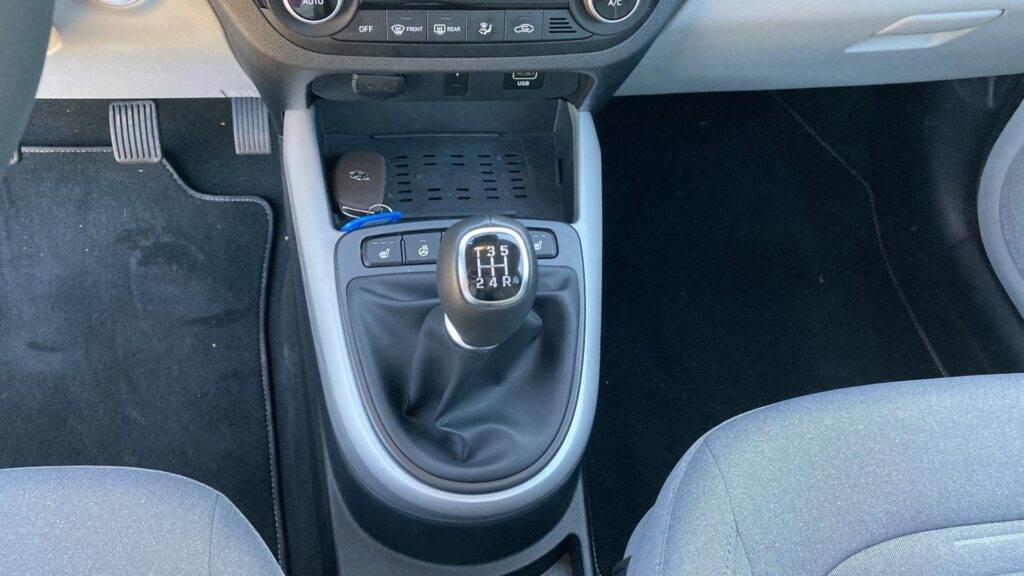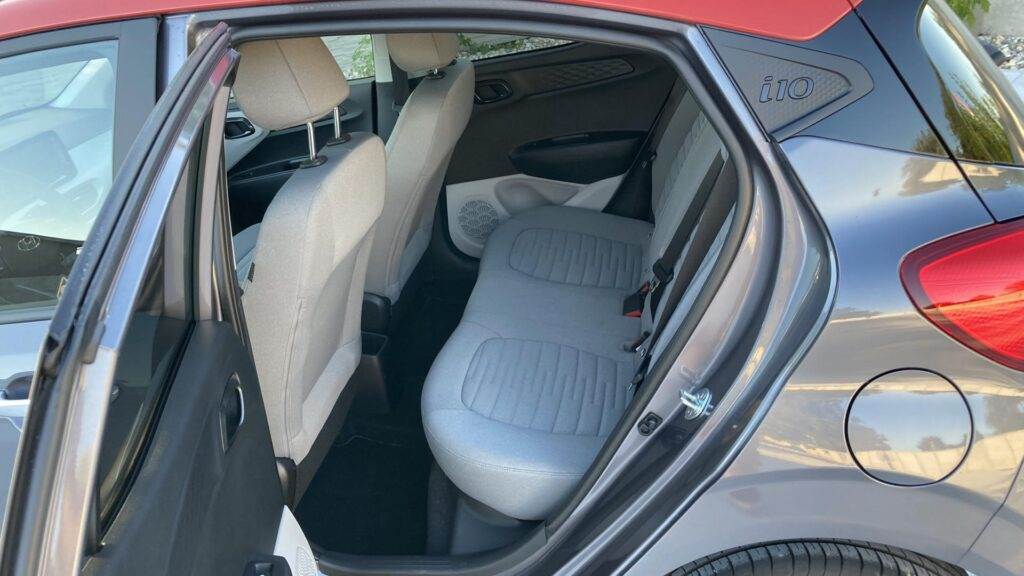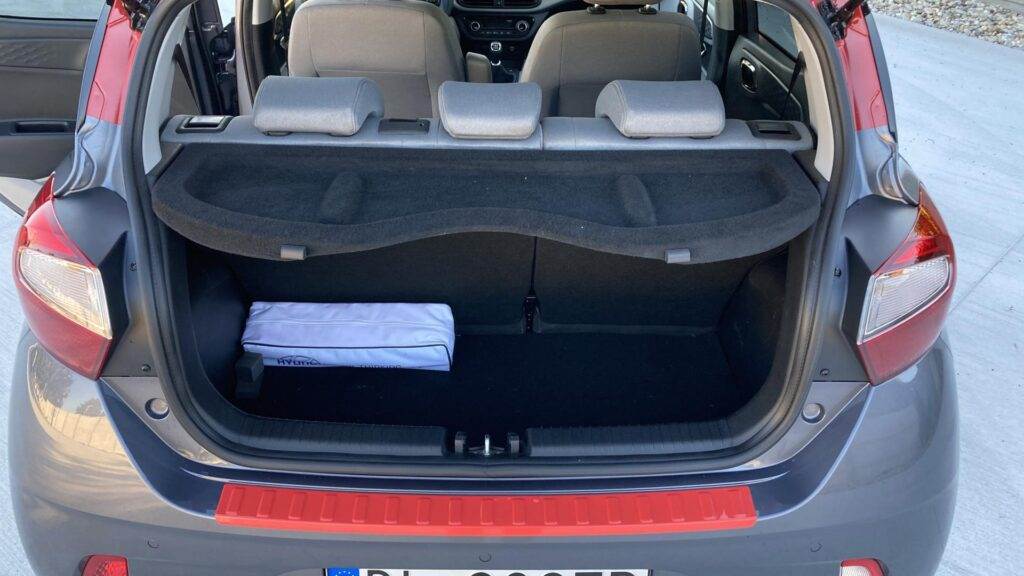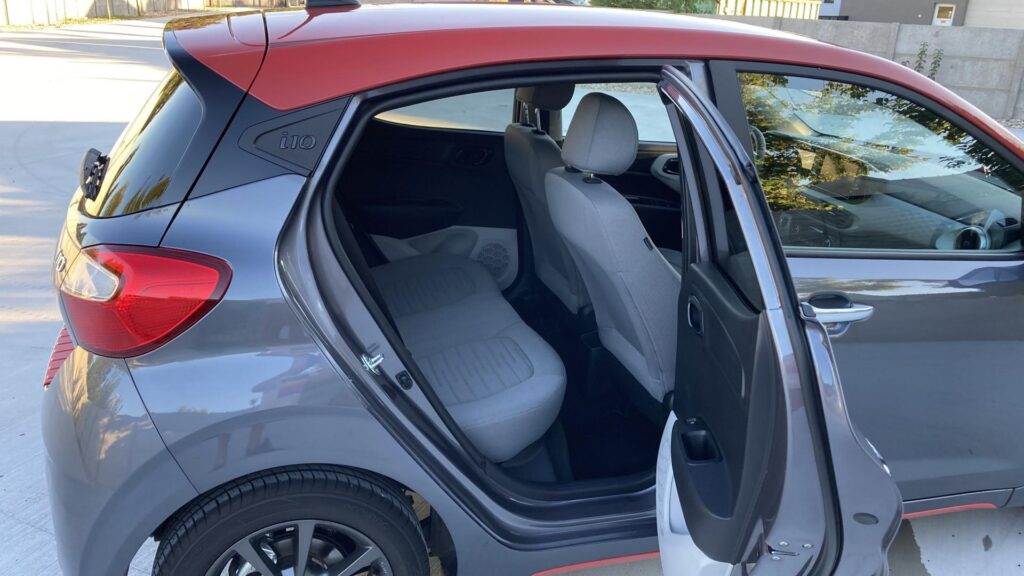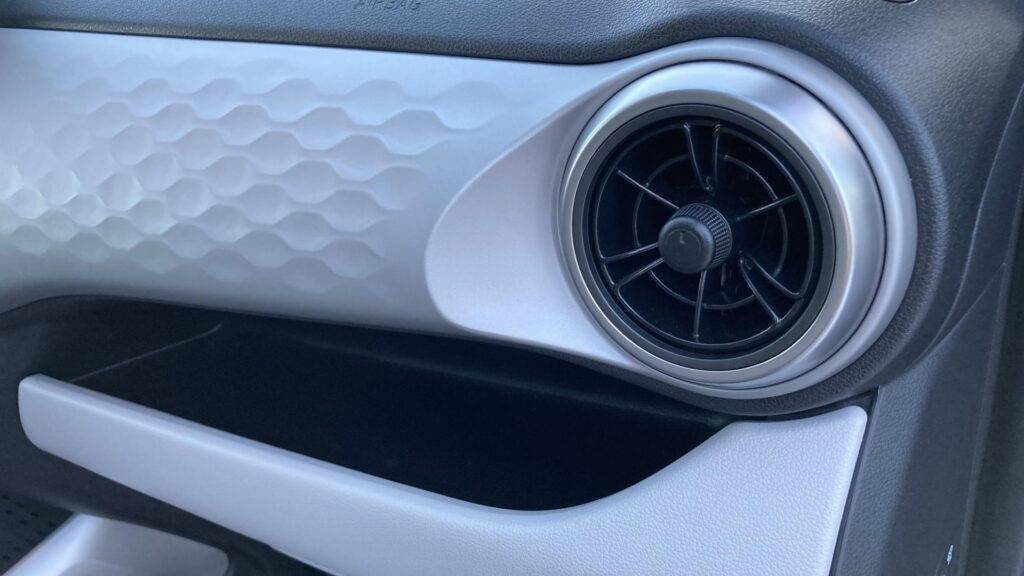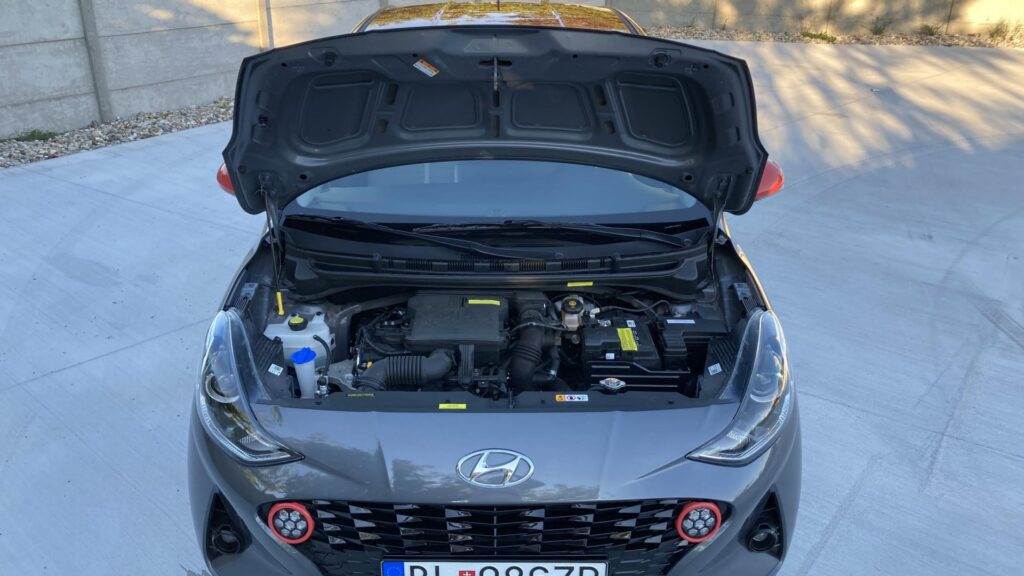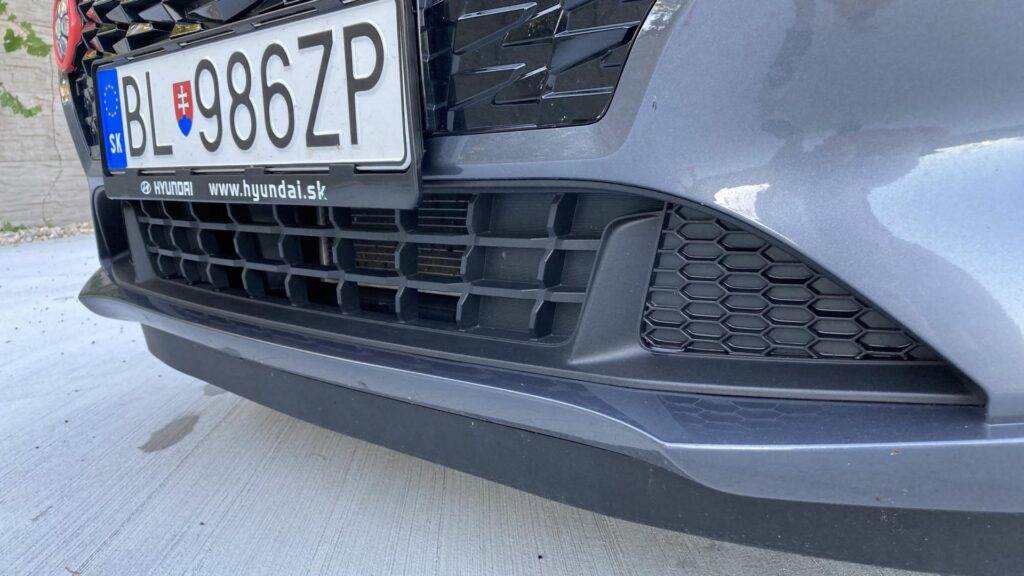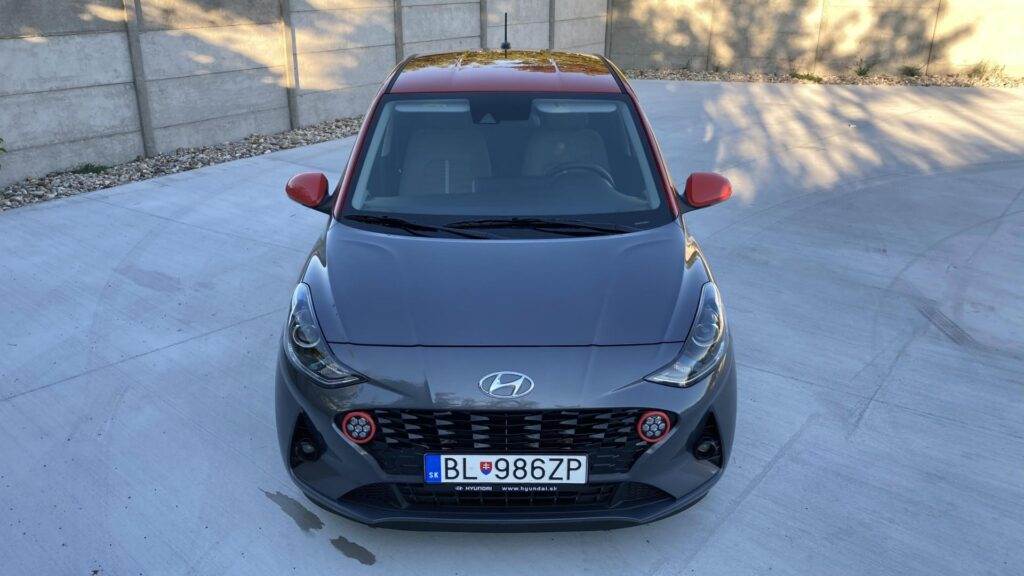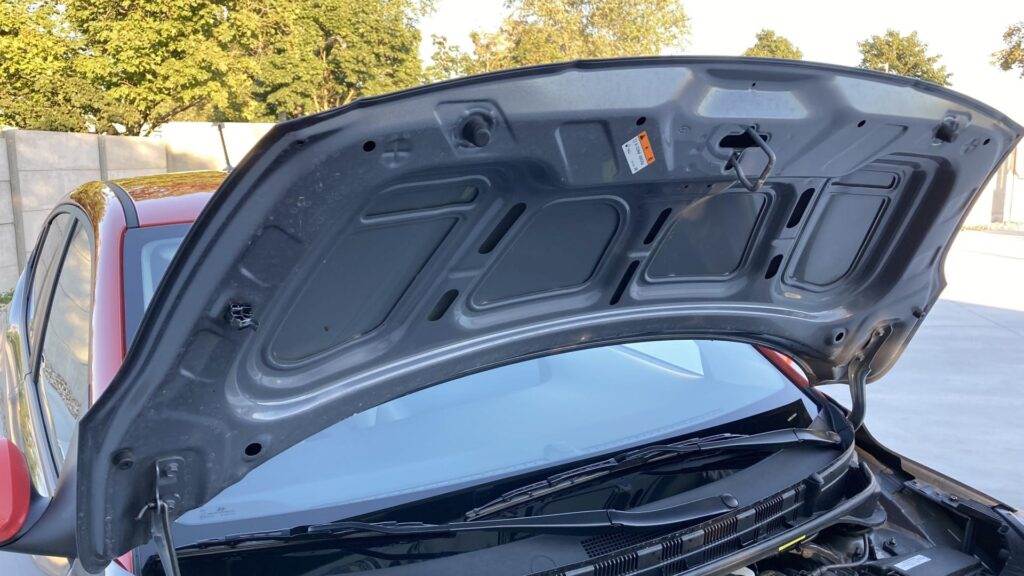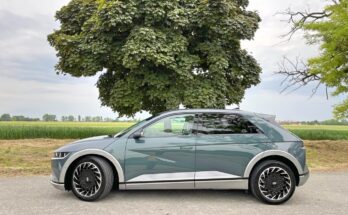We remember the first generation of the i10 model from 2007 as a nice car, but slightly boring in all respects – in terms of driving, quality of processing and finally a significantly "different" design. The second generation added functionality and aesthetics, and the third one tries to convince us that this is already a full-fledged European car with everything that goes with it.
After all, this is obvious even at first glance, and the current version looks like a pretty nice car compared to the amorphous first i10 and the rather ordinary-looking second edition. The exterior has some funny details, for example, LED daytime running lights in the form of "touch-me lamps" (for the two top versions), reliefs with the designation of the model in the rear pillars or an additional two-tone paintwork, which gives the impression that the owner reached deeper into the wallet and that this is not just any cheap shopping bag.
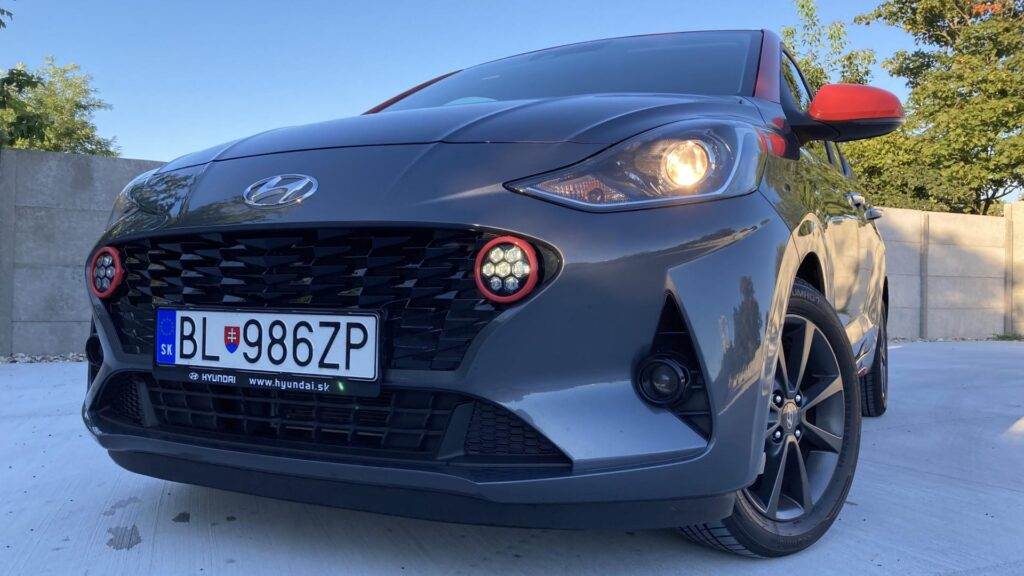
The interior is, of course, adapted to the fact that the base price starts at a promotional €8,890. In the interior, you will find almost exclusively hard plastics, which, however, unlike older models of the brand, do not smell of oil, and overall you will find more high-quality materials here. The i10 also somewhat compensates for the quality with its design. Nice plastic elements on the dashboard in front of the passenger or in the door panels create the impression that the designer took care and the customer gets a little more than he would have to for a cheap car.
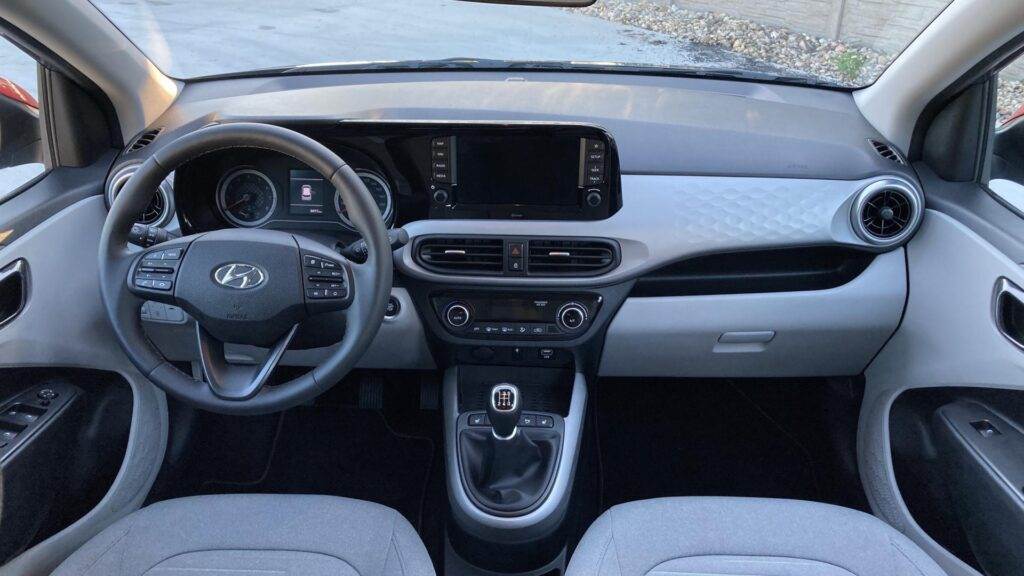
In terms of ergonomics, everything is fine inside and there are no excesses. Controlling the temperature of the air conditioning and the volume of the radio with reasonably large rotary controls does not cause problems or confusion, and the buttons for various functions around the infotainment screen are also a proven solution. Within it, we can find the option of connecting via Apple CarPlay and Android Auto. When operating all possible functions, it is important to try not to complicate anything unnecessarily. There are easily accessible buttons for heating the seats and the steering wheel in front of the gear lever. It is not a problem to find a comfortable position behind the steering wheel, but it is not retractable even for an additional fee. The instrument panel does not show complexities either, the analog and digital elements of which are easy to read. From the user's point of view, the interior of the i10 will suit a very wide range of drivers.
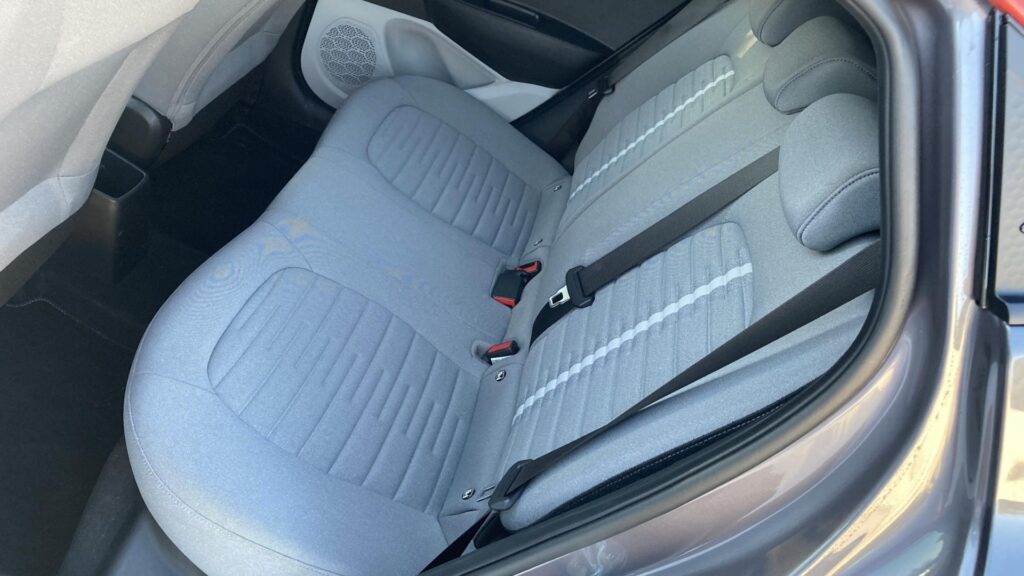
The rear seats are suitable for a maximum of two people with a height of up to approx. 180 centimeters. The seats are not particularly short and they also benefit from their easy tilting backwards. In addition, the wheelbase grew by 40 millimeters between generations. The tax for a reasonable amount of space for passengers in the second row is a horizontally built trunk with a more prominent loading edge, which is, paradoxically, 29 millimeters lower than in the older version. You can at least partially benefit from it thanks to the double floor of the trunk in higher equipment. The trunk is as you would expect in this category, but I hid the electric scooter in it without any problems…
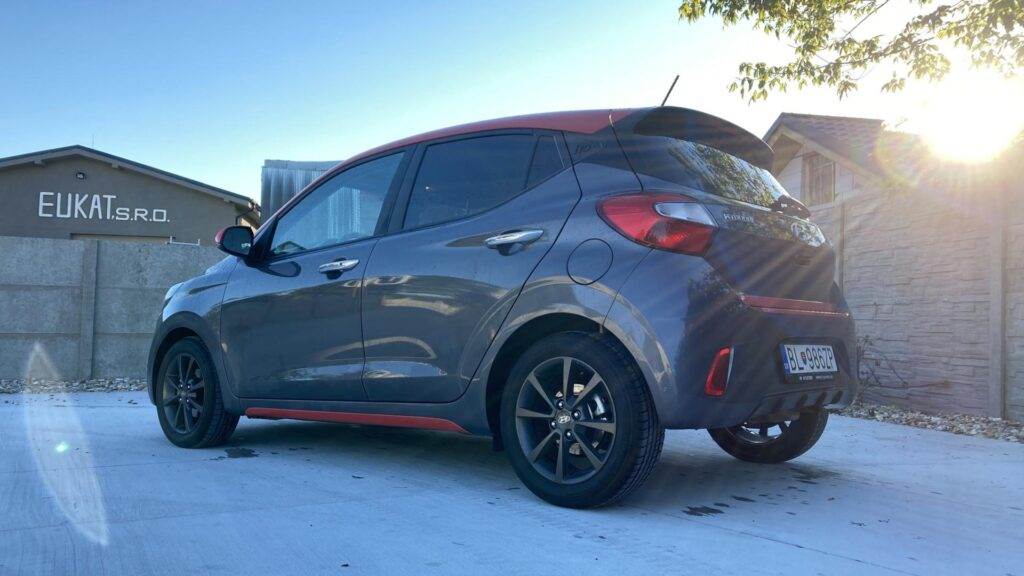
The tested i10 was equipped with almost all items from the price list and is already quite far from the basic model. The price has almost doubled with an amount exceeding €16,000. However, the gray metallic paint combined with the red roof and accessories is beautiful, and it also got chrome handles, which are surprisingly not distracting here. For the higher equipment, you automatically receive, among other things, a travel wheel, rear parking sensors with a camera, a height-adjustable driver's seat, a leather-covered steering wheel and gear lever, an armrest on the driver's seat, rear speakers or electrically operated mirrors.
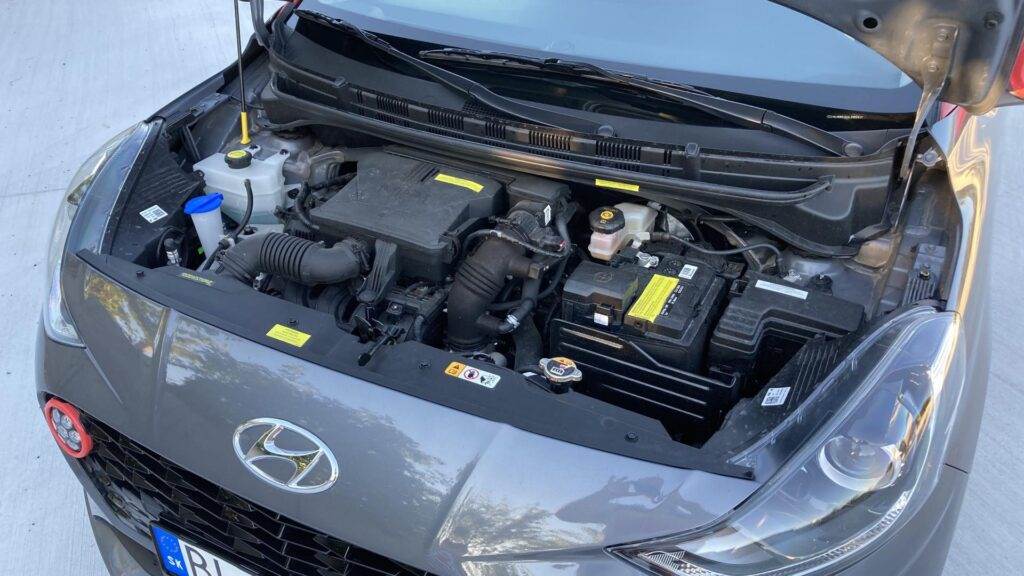
Under the hood of the tested piece was the more powerful of the pair of atmospheric engines. You can choose from either a 1.0 l three-cylinder or a 1.2 l four-cylinder. Both are combined with a 5-speed manual or 5-speed robotic transmission. The tested engine had a volume of 1.2 liters and a maximum power of 61.7 kW (84 hp) and a maximum torque of 117.6 Nm at 4200 rpm. The performance is more than sufficient and the engine reacts without hesitation in the city. The car can also be overtaken decently, and the i10 accelerates above 100 km/h at an acceptable pace, while it has no problem even driving at a speed of over 140 km/h. However, you have to take into account the increased noise in the cabin, because noise reduction in such a small car is not exactly what the designers wanted. At higher speeds, consumption also increases to seven liters per hundred kilometers compared to the city's 5.3 l/100 km. It is also necessary to add that this engine is without direct injection, without a GPF filter, without a turbo and therefore with the prospect of very low service costs.

The chassis in the i10 gets along well with Slovak roads. It absorbs unevenness well and the wheels do not bounce even in the 15" wheel design. The lengthening of the wheelbase, lower silhouette, greater width and technical improvements to the chassis are recognizable. As with the previous version, there is a McPherson strut on the front axle and a torsion bar at the rear. In turns, the i10 works more maturely than you would expect from a car in this category. Leaning is not threatening at all and understeer comes smoothly at higher speeds. The brakes require a bit of getting used to, with a rather sharp onset. By the way, in the two higher equipments, they are rear discs! Traveling is facilitated by driving in a lane, which the smallest Hyundai already has in the basic equipment, and a turning diameter of 10 meters is also useful, which the triplets from Cologne can only silently envy.

The most affordable Hyundai with the i10 designation has great ambitions and in many ways it fulfills them. It behaves maturely on the road, is comfortable and very easy to operate. It is such a small urban elegance that provides a lot of music for little money and is destined to be a full-fledged representative of the second car in the family or can also act as a stylish shopping bag for the urban jungle.
| Technical specifications | |
| Make and model: | Hyundai i10 1.2 Style+ |
| Number of cylinders: | 4 |
| Engine displacement (cm 3 ): | 1197 |
| Gearbox: | 5-speed manual |
| Driven axle | front |
| Power (kW(Ps)/rev.): | 61.7 (84) /6000 |
| Torque (Nm/rev.): | 117.6/4200 |
| Maximum speed (km/h): | 171 |
| Acceleration 0 – 100 km/h (s): | 12.6 |
| Combined consumption (l/100 km): | 5.1-5.8 |
| Length/width/height (mm): | 3670/1680/1480 |
| Wheelbase (mm): | 2425 |
| Luggage compartment volume (l): | 252 |
| Fuel tank volume (l): | 36 |
| Curb weight (kg): | 932-1007 |
| Useful weight (kg): | 498 |
| Tire size: | 195/45R16 |
| Basic list price of the model (with bonus): | 8890 € |
| Price of the tested vehicle: | €16,270 |

